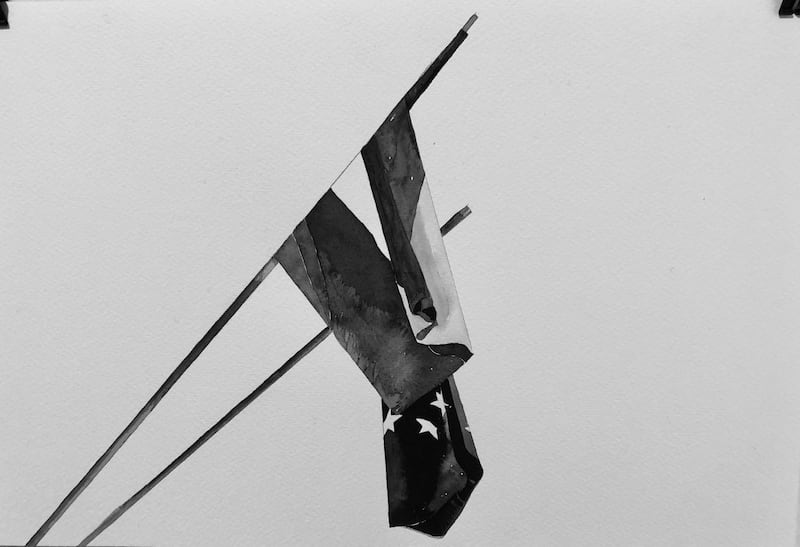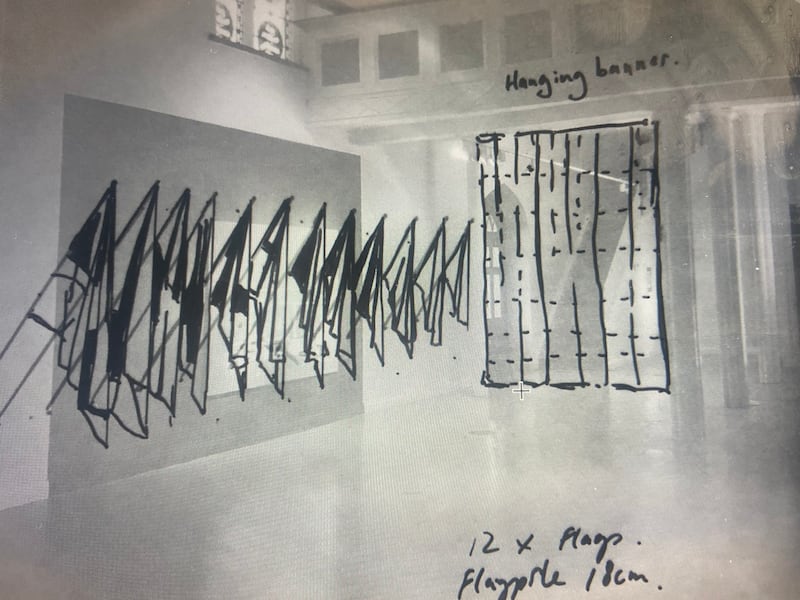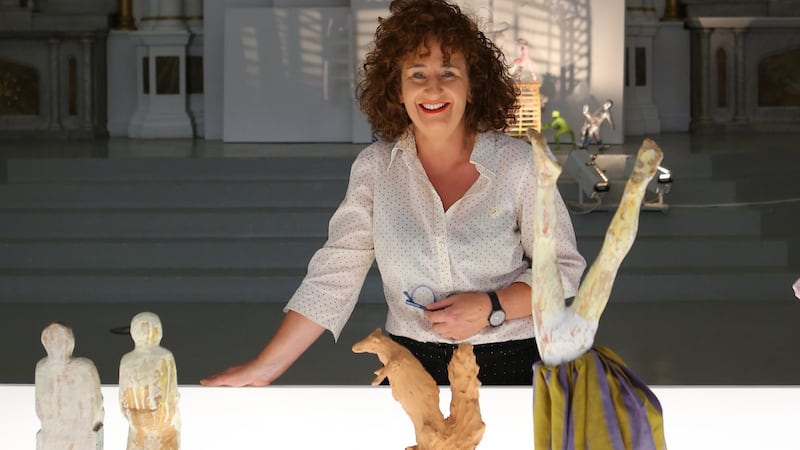There have been times during the past year when I felt really stupid for being hopeful. Those were the moments when the sun came out, and I briefly forgot the nature of the news, and all the things we had to do and not do to keep one another safe. Highlanes Gallery director Aoife Ruane recognises the feeling. "But not now," she says. "We're open, and it's good."
That sense of a more positive outcome has also made her realise how truly difficult things had been. “Now we’re coming out of it, I realise: yes I’ve been just surviving. It didn’t feel so hard at the time but, looking back, those first two weeks in January were devastating.” Having remade her gallery schedule for what she describes as “the 27th time”, Highlanes is preparing to install Joy Gerrard’s exhibition, the title of which, Precarious Freedom, seems almost alarmingly apposite.
Over the past few years Gerrard’s drawings, paintings and photographs have focused on protest crowds. This exhibition includes images from the International Women’s Day rally in Paris, where the artist had been on a residency in March 2020. That was to be one of the last public protest demonstrations before the coronavirus lockdowns began.


Was the exhibition a Covid commission? "I don't know what audiences will feel when they see the work," says Ruane. "The way we see crowds of people has obviously changed. I had a much stronger sense of her work in its relation to Brexit when I programmed it." It's true. Whereas once a large gathering could be an occasion for shared purpose and maybe also joy, we have been more recently taught to fear other people, and to shun larger groups.
Time has added meanings to other parts of the exhibition, too. Dark Europe is an installation of the flags of the EU, their colours removed. Initially provoked by Brexit, Gerrard now sees it as a sort of mourning for how, post Covid, the pandemic has reinforced national borders, rebuilding what the European project sought for so long to dismantle.
Normally an artist would make a number of site visits when preparing an exhibition, but Belfast-based Gerrard has had to resort to making models in her studio, layering her work over reconstructions of the Highlanes, and emailing the resulting images to Ruane. Ruane herself describes these pictures, in which the future exhibition is superimposed over the current one (showing the work of the late artist Janet Mullarney), as being both uncanny and exciting.
During the lockdowns, the team at Highlanes continued to hang exhibitions for online viewing, but the pandemic also caused them to rethink their programming, and their purpose. “If I was the audience, what would I want to do with these days?” Ruane asked herself. “There were moments of head scratching, we’ve all had them, but I kept thinking – how can we be useful, what can we offer?”
Kettle chats
Like many galleries and museums, Highlanes acquired new works for their collection, but Ruane’s main answer lay in a series of mid-morning talks – including studio visits with artists, talks on art and art history – which quickly attracted a loyal following. “I called them the Elevenses. The idea was that people would put the kettle on and settle in.” As the sessions progressed, people began to leave their Zoom cameras on and ask questions, turning presentations into conversations.
“It was that sense we all had, that we all needed to connect. It was fascinating to see how the artists prepared, and I think our audiences got an access and insight into artists’ lives and their studios that they otherwise wouldn’t have.”
She describes one virtual studio visit video in which artist Laura Fitzgerald showed a film in which she pretended that Sean Scully was her uncle, and had gifted her a farmyard barn in which to work. "It was hilarious, quirky and amazing," says Ruane. Other Elevenses sessions were more conventional, and all are being archived, so the series is also both a contemporary insight into the lives of artists during Covid and a future art historical record. "There's no high-tech moment," says Ruane. "It's just Zoom, but we will have them all available to view."

We talk about the highs and lows of the past 15 months. “I was afraid, at certain moments – when Covid was really high in January, and we didn’t know how contagious the new variants were. It was strange to be in the building with people,” says Ruane. “At times there were just four of us in the entire building, trying to map out what we were going to do. I found the only way to think was to actually be present in the gallery.”
She describes the atmosphere in Drogheda as tense at times at the start of the year, when the days were short and dark. But she also says that a strong community spirit emerged as people began to think about how they could help one another. “The gallery is in the heart of town, and there’s a real sense of camaraderie. It was actually a beautiful thing to feel as it grew. For some people it was too tough to think, so you start to wonder – what can I do? It made me question: what did I do to be useful?”
Culture Night
Accurately pinpointing some of the more existential themes of thought that Covid has caused, Ruane also highlights some of the strangenesses. "On Culture Night we had a session in our cafe. People were sitting in pods and there was a tasting menu and a talk on Nano Reid. We stuck to all the restrictions, and it was completely safe, but I was almost afraid to share the video. It looked so normal, it felt like a sin."
Highlanes was able to keep its team during the lockdowns, and there were also expansions. New lighting has been installed and there is a new cafe, Five Good Things, which Ruane describes as a “pandemic baby. It’s thriving. They were open for takeaway, and there’s an outdoor area, and a new parklet on the street.”
There was also a programme of online workshops for primary school children, where the artists’ own kids were often the guinea pigs. “There had to be a lot of edits,” says Ruane, smiling at the memory of one session, during which a certain artist’s children were not on their best behaviour for strangers.
A new partnership has also been formed through Mosney Village Accommodation Centre director Sarah Gates, who Ruane notes is a former art dealer. This will make cultural links with the residents and their families, who encompass 62 different nationalities. With all that going on behind the scenes, Ruane says it is a wonderful feeling to be able to welcome people back into the galleries.
“We reopened in June, October and December. It was sluggish last summer, and in October and December. Now there is a renewed vibrancy, people are coming in confident. They know how it works (you can book, or walk up), and our invigilators are saying that they’re staying longer, they’re engaged, connecting, revisiting. This time round, people know what they want to do – whether that’s going to Penneys, or visiting museums and galleries.
“It’s scary to look back,” she concludes. “It feels really tough when you do. We weren’t financially damaged, but you also need to be able to think you were vital in some way, for yourself as much as for your audiences. It’s amazing to be able to look and see people. To see the community.” Maybe one day soon we’ll be comfortable seeing crowds again too.
Joy Gerrard, Precarious Freedom, is at Highlanes Gallery, Drogheda from June 26 to July 31. highlanes.ie
















